“Fornicators of Nuns” is probably not the first term you’ll be looking for when you settle into an armchair with an old dictionary, just to browse it a bit out of general curiosity. It is one of those signs that the past is like another country. They did things differently, and sometimes very differently.
Venetian Stories
This post is an issue of our newsletter — Venetian Stories — which goes out every few weeks, to keep in touch and share stories and titbits from and about Venice and its history.
Love in the cloister
In the year 1500 the Venetian senate brought charges against a group of Venetian noblemen.
Vincenzo Morosini, Giusto Gauro, Vincenzo Loredan, and Bernardo Pisani were accused of having repeatedly entered the Monastero delle Vergine at night to sleep with some of the nuns.
Morosini apparently had an affair with Franceschina Boldù, a nun of the monastery. Gauro laid with sister Laura Marini, and Loredan with sister Chiara Bon. Pisani slept with both Franceschina da Lezze and the Franceschina Boldù mentioned above who bore him several children.
Clearly, these affairs went on for years before being discovered or acted upon.
The persons involved weren’t just anybody. They were very much somebody.
The families of Morosini, Loredan and Pisani were all very wealthy and powerful dynasties within the Venetian nobility. The Morosini family sported four doges in the history of the Serenissima, three of which before 1500. The Loredan had three doges, with Leonardo Loredan elected the following year.
The women weren’t exactly poor, destitute orphans, either. The Boldù, Bon and da Lezze families were all inscribed in the Venetian patrician class. They were from the same social class as their lovers.
An established practice
The example above was neither the first nor the last of such cases.
There are numerous stories of nuns who just wanted to have fun.
From 1491 there was a court case involving other young noblemen and the nuns of the monastery of Sant’Anna.
Sanudo reports in his diaries for 1509 about the nuns of the monastery of Celestia. They partied all night with dancing to the music of flutes and horns, with the willing participation of young men of patrician families.
The Tuscan poet Francesco Berni wrote about the nuns of the Celestia, sometimes in the early 1500s.
Stiamo in una contrada et in un rio
Presso alla Trinità e all'Arsenale,
Incontro a certe monache di Dio,
Che fan la pasqua come il carnovale,
Idest che non son troppo scrupolose,
Che voi non intendeste qualche male.
We are in a district and on a canal
Near the Trinità and the Arsenale,
I meet certain nuns of God,
Who celebrate Easter like Carnival,
I.e., who are not too scrupulous,
That you may not understand badly.
The abbess of a nunnery at Santo Spirito, in the late 1400s, was accused of having had a long-standing affair with a priest, with a young Greek man, and with a doctor which she would regularly call for to be visited in her cell.
In 1567 two nuns fled the same monastery. Both had noblemen as lovers, and one of the two was pregnant.
A lawyer was banished from Venice in the 1700s. He had had an affair with two sisters, both nuns at Celestia.
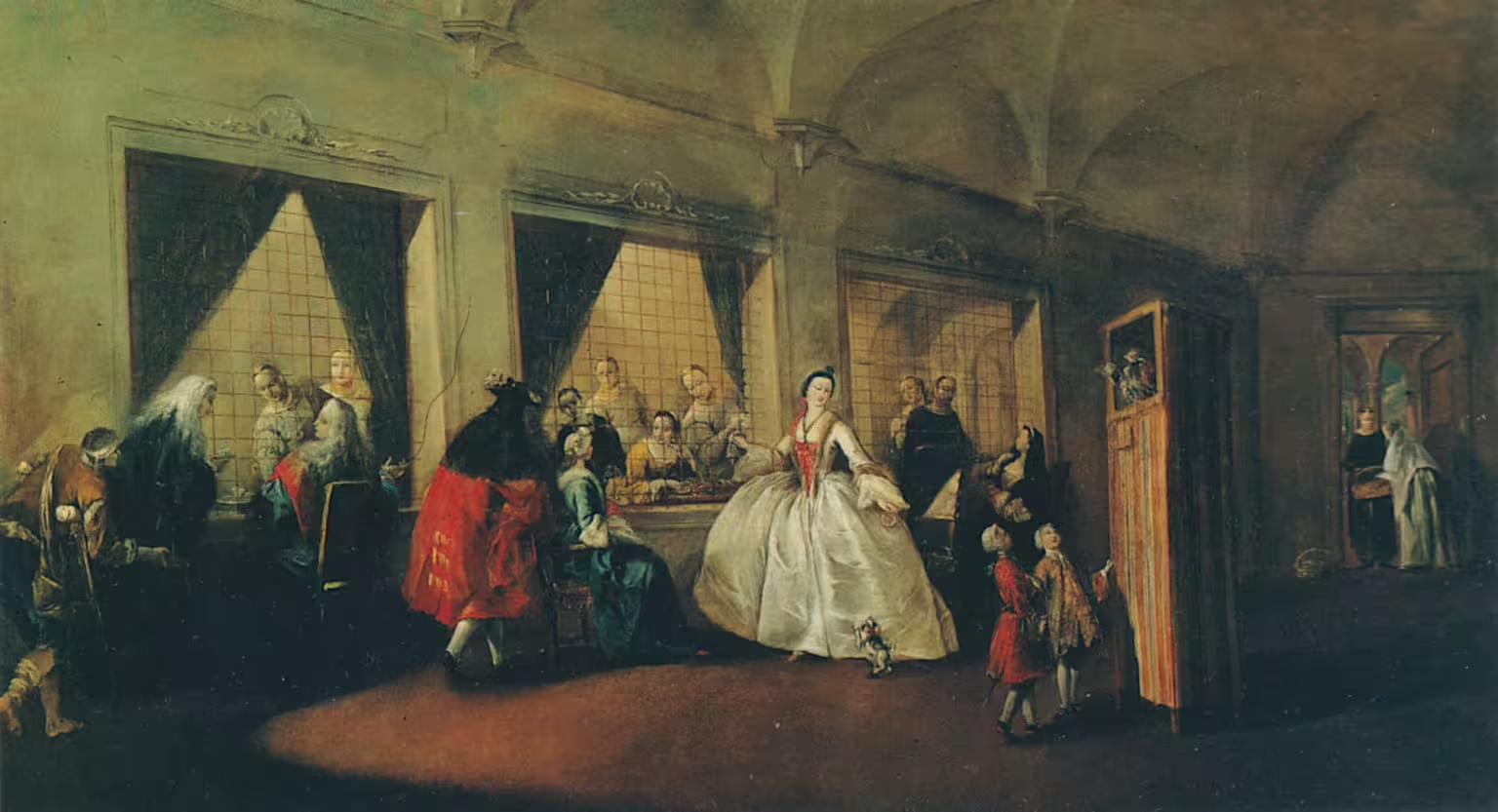
Laws and more laws
Now, nuns weren’t supposed to have that kind of fun. While it was generally up to the church to prosecute its own, issues of general morality were the remit of the state in the Serenissima.
Over the centuries, the Venetian state therefore issued numerous decrees, proclamations and laws against the general vice of fornication with nuns.
A law passed in 1349 by the Consiglio Maggiore was explicitly “Against those who commit fornication in the monasteries of the Nuns of the Duchy of Venice.” It stipulated that perpetrators should be apprehended, and kept safely arrested until the Avogadori de Comùn — the public prosecutors of the time — could investigate and bring charges.
A very detailed law by the Pregadi (the Venetian senate) from 1486 laid out meticulous provisions for anybody who entered nunneries to have fun with the nuns. There were prison terms — both in the new prison and in the harsher blind prison — and a wide range of fines for those who entered the monasteries illegally, for those who actually had sex with the nuns, and for repeat offenders.
Who controls the controllers
An interesting section of this law is related to offenders from the circle around the Consiglio di Dieci. The Council of Ten was one of the most powerful institutions in the Venetian state, which also served as a tribunal in cases against patricians.
The law obliged the heads of the Consiglio di Dieci to regularly, at least once a month, interrogate under oath the masters of the boats of the council, that they have taken nobody associated with the council to any female monasteries. Additional fines on such centrally placed offenders served to pay rewards to the rowers and their masters whose information lead to successful prosecutions.
Such use of paid informants is a constant in Venetian law enforcement, as is also evident from other law texts. Half the fines levied on the convicted fornicators of nuns went to the informants. The other half to the office of the Avogadori de Comùn.
Servants and slaves
Apparently, it was also not unusual for nuns to keep paid servants and even slaves in the monasteries.
The law stipulated that if the testimony of a slave in the monastery led to a successful prosecution, besides the normal half of the fines, the enslaved woman should also gain her freedom.
Likewise, paid servants with a written contract were entitled to both their full pay according to the contract, and also being freed from the same contract.
Reluctant nuns
It should be fairly evident that many of the women involved in these stories were willing participants. It is a logical consequence that they probably didn’t really want to be nuns.
Ancient Venice was a patriarchal society. Men were in charge, and family honour, wealth and social status often mattered more than what any individual might want or desire.
In such a society, there were many ways a young woman could end up a nun against her will.
The most obvious was that she wasn’t marriable at a social or economic level acceptable to the family. This could happen, for example, if she lost her virginity and got pregnant before being properly married. Rather than accepting a marriage for her below the social or economic status of the family, she could be put in a convent.
Or simply, the family might have thought a young girl too boisterous, so better put her away in a safe place before she does any harm to the family’s standing. They might believe that firm discipline and a solid dose of prayer and authority would put her right.
Mental health conditions, left unrecognised and untreated, could easily lead to such a situation, but so could many other things.
Economic reasons could also be a factor. Each daughter required a dowry and expenses for the wedding, which were important concerns. For example, in the case of the testament of Marco Polo, quite a bit of effort goes into assuring that the last unmarried daughter receives everything need for a proper wedding.
A family with too many daughters, but without the ability or the will to dispense of the funds for the marriages, could save money by sending ‘excess’ girls to a nunnery, which accepted a lesser amount.
In each of these cases, what the young woman wanted herself was of little relevance.
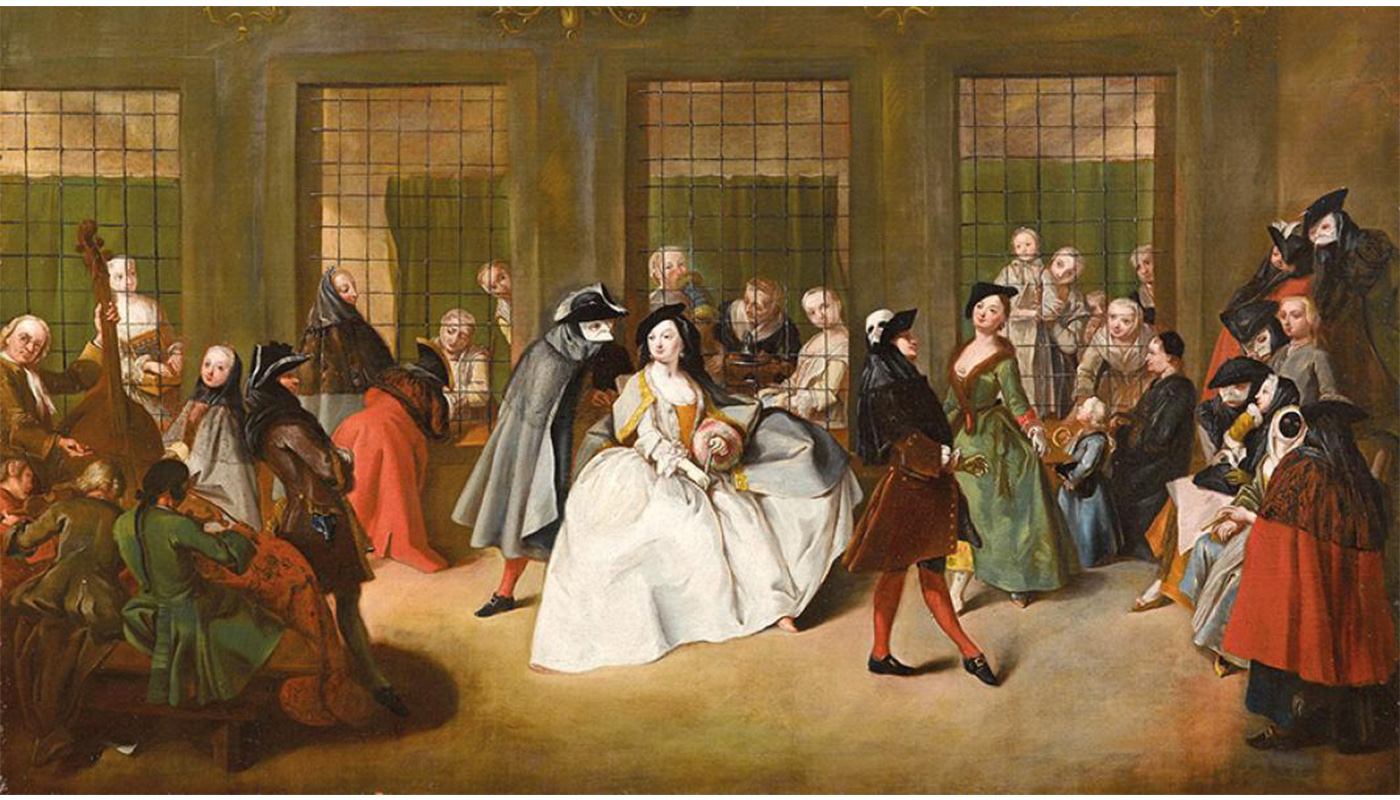
Not just Venice
The problem of nuns being in a monastery for all the wrong reasons was not particular to Venice, and the problems of fornicators of nuns and immorality in general in the nunneries can be found a bit all over Europe.
I’ve only found one online article about the subject, though: Fornicating with nuns in fifteenth-century Bologna.
Related articles
- Prostitution in Venice
- A Venetian Law about law enforcement and informants;
- The testament of Marco Polo about dowries and slaves.
- State institutions of the Republic of Venice
Much of this material come from the Lessico Veneto by Fabio Mutinelli, especially the entry on Monachini, Moneghini, and from Curiosità Veneziane by Giuseppe Tassini. Both are treasure troves of oddities about ancient Venice.

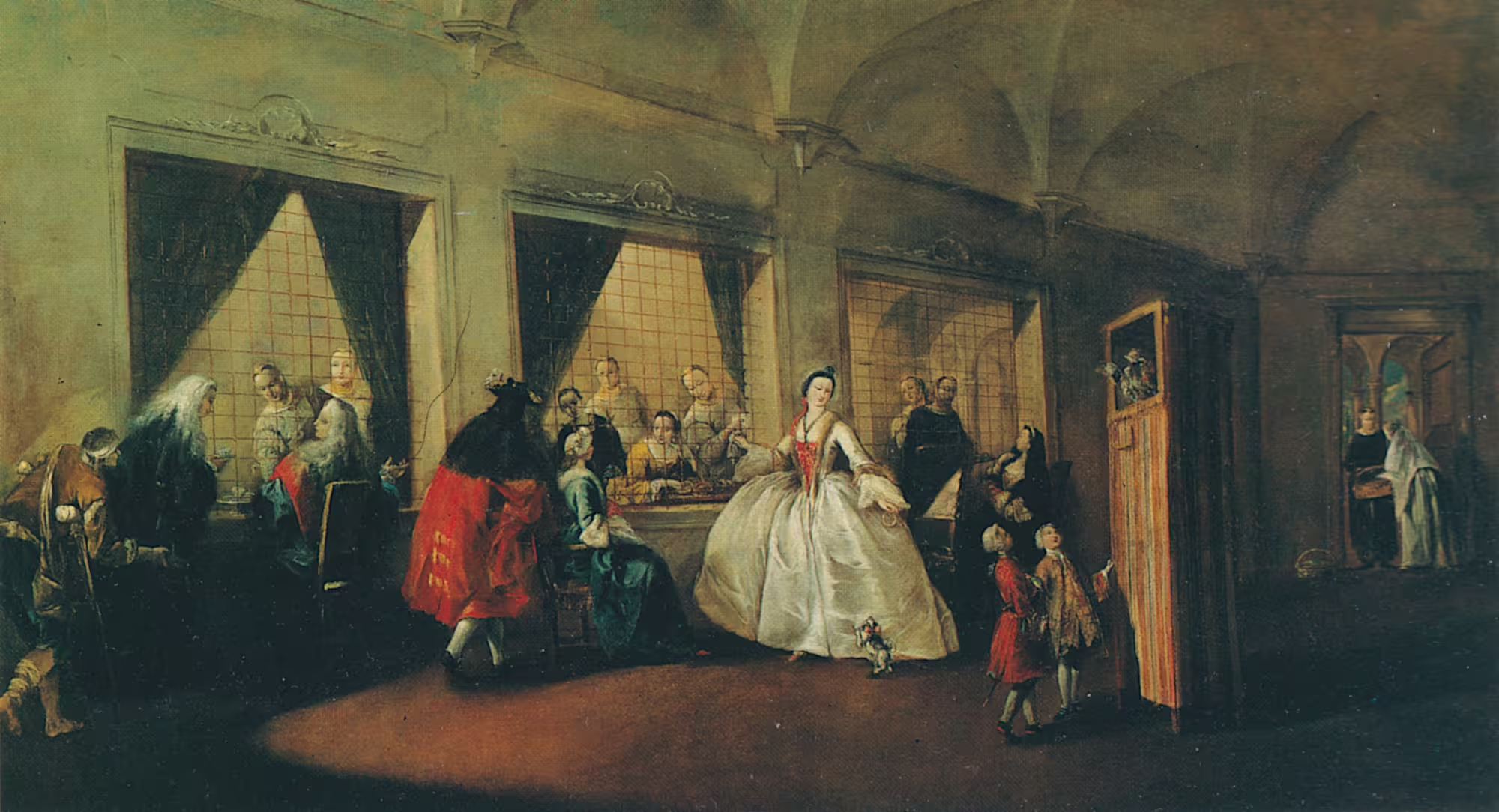
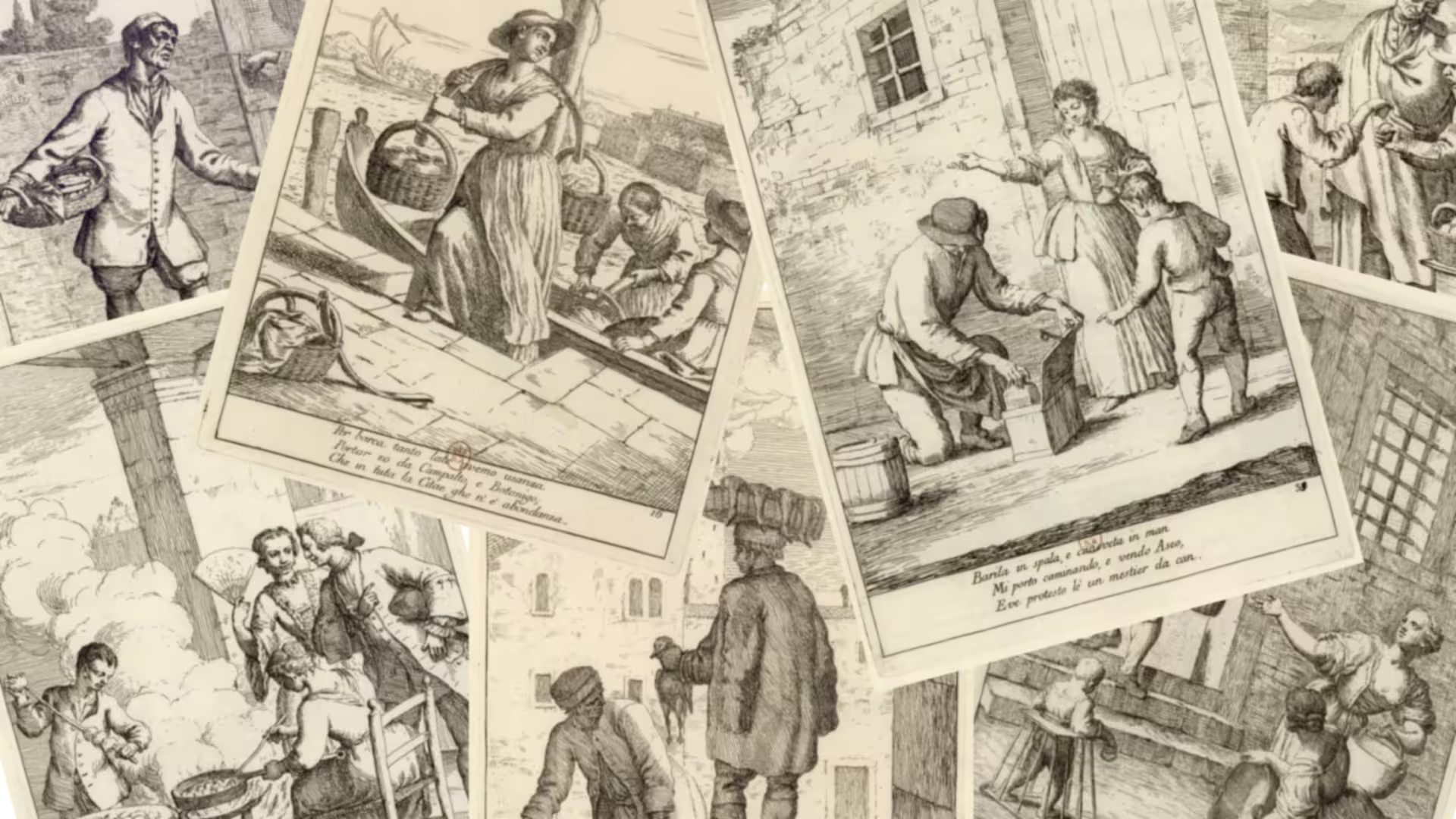
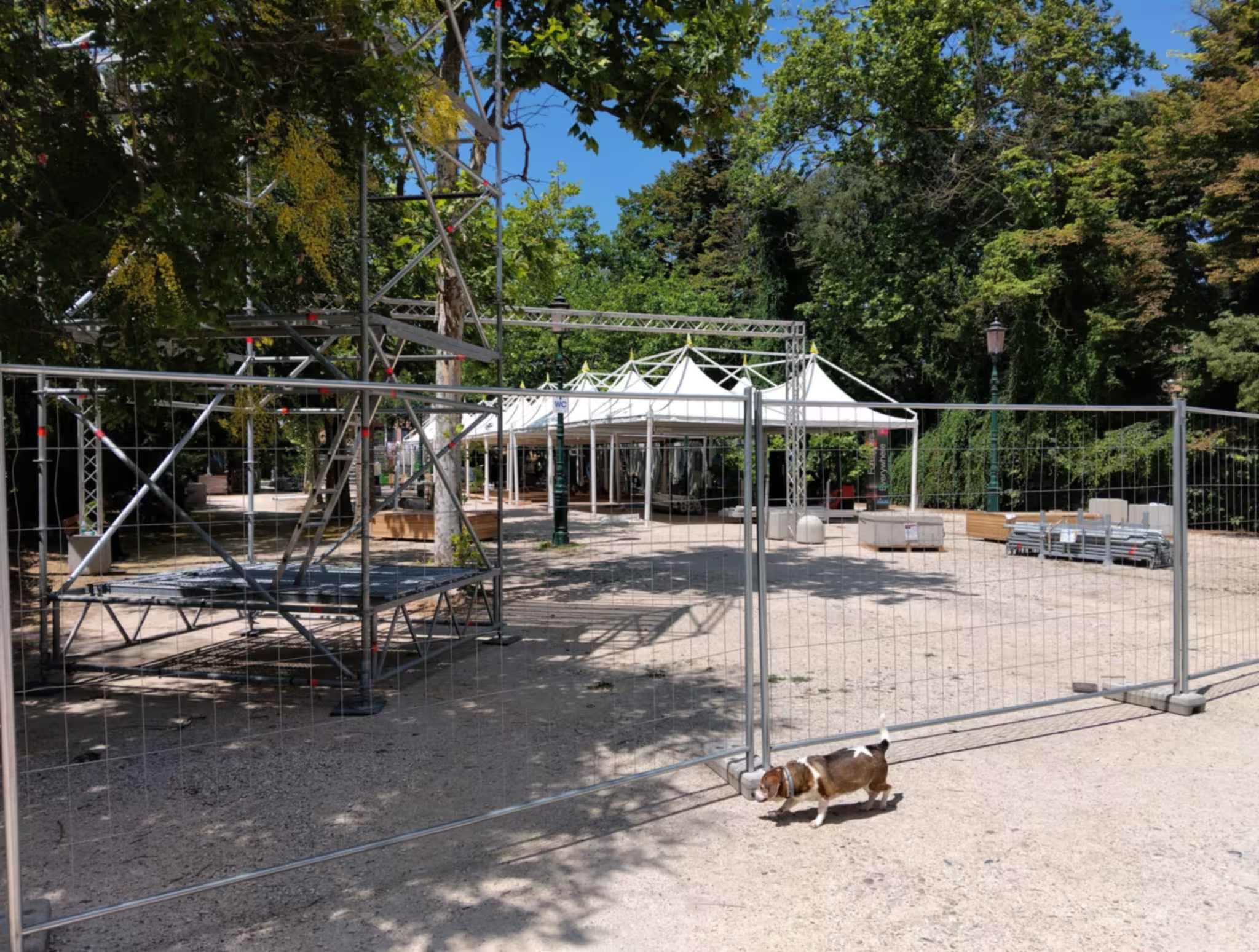
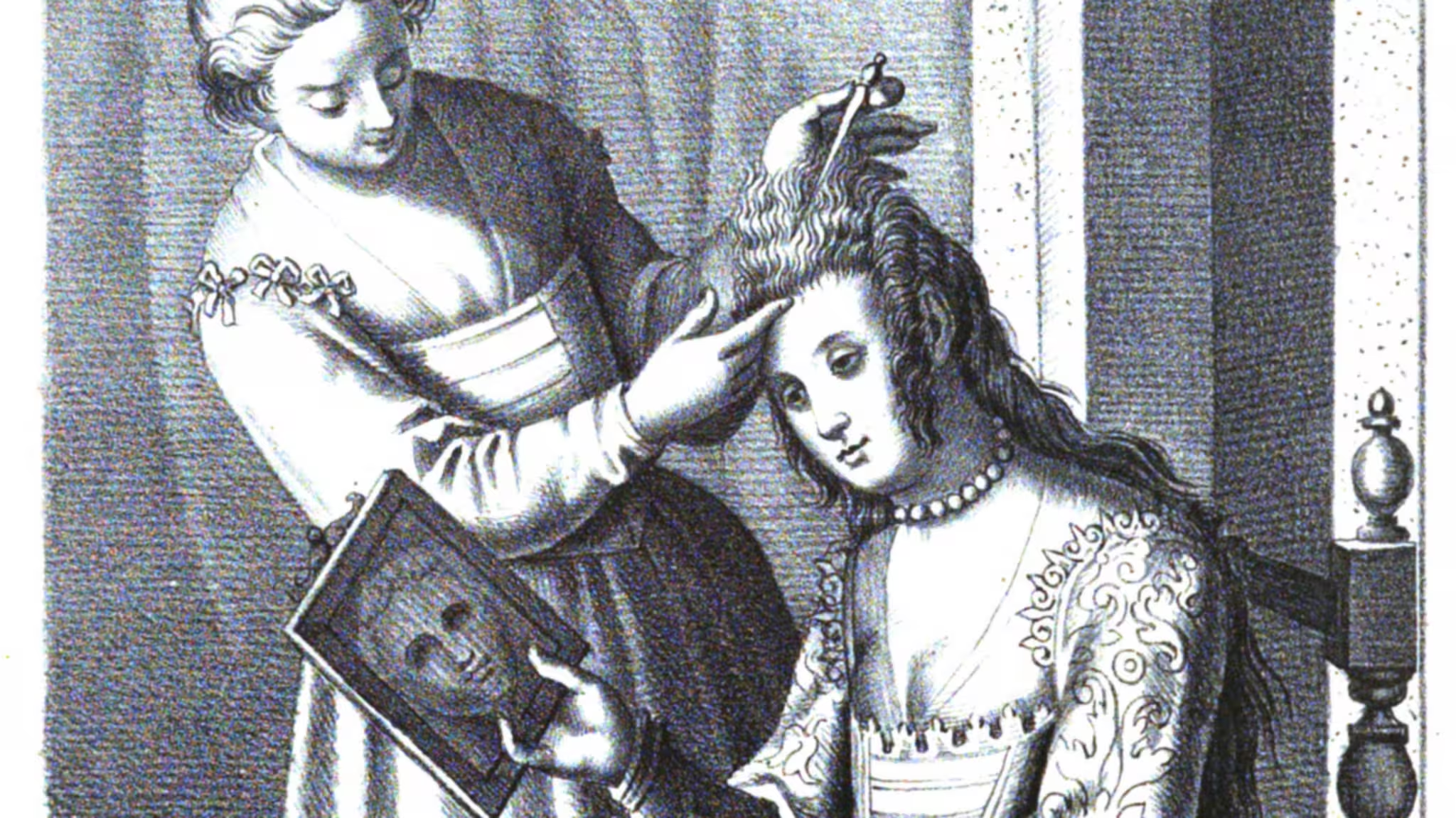
Leave a Reply